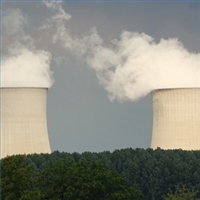
Targeting the gaping hole in energy finance, which has led to the infamous circular debt problem, Shoaib Hamid argues for reducing line losses as opposed to increasing tariffs. He highlights the example of four sets of reforms undertaken by State authorities in Andhra Pradesh, India: (1) reducing electricity theft, (2) reducing corruption within the utility, (3) improving the business processes of the utility and (4) high quality modern metering.
“As a result of the reforms initiated by the Apseb, collections in that state, as per World Bank estimates, rose substantially to 98 per cent and line losses were reduced from 38 per cent to 22 per cent. The state utility was also able to regularise 2.25 million unauthorised connections. Disciplinary action was taken against 218 employees and cases launched against 87 employees. Moreover, more than 150,000 cases were pursued against defaulters compared to 9,200 in the previous 10 years. The results, it can be seen, are both impressive and sustainable. I will only reiterate that in the case of Pakistan, there is no quick fix to the power crisis. … there are lessons to be learnt from our next door neighbors, which show that even short-term measures, taken in earnest, can have positive long-term consequences.”
Mr. Hamid does not clarify, though, whether eliminating line losses will remove the entire gap that currently exists between revenue and costs. It is also unclear how successful such reforms might be in places like Karachi. Witness the violent reaction over the Karachi Electric Supply Corporation’s (KESC) attempted downsizing earlier this year.
Farooq Tirmizi addresses energy supply from what appears to be a provincial/political perspective. He highlights the decades long conflict between the provinces of Sindh and the Punjab over resource sharing (mainly water) and infrastructure investment. He also explains the current gas shortage in the Punjab that is drastically curtailing industrial activity there as well as adversely affecting households.
“… the animus between the two provinces runs deep and is understandable. But when it comes to energy, the tables are turned. Sindh has an overwhelming dominance on energy and Punjab is little more than a bit player in everything except electricity generation. Given this fact, and the fact that Punjab made an extraordinary gesture towards fairness by sacrificing some of its own interests in the National Finance Commission (NFC) Award of 2010 – which distributed tax revenues amongst the provinces – Sindh needs to revisit its role and treat Punjab more fairly on energy.”
Leaving aside the problematic assertion that the 7th NFC award (2009) represents some grand magnanimous gesture on part of the Punjab towards the other provinces (Sindh and Khyber-Pakhtunkhwa also saw a reduction in their relative share of the provincial pie, with only Balochistan’s share increasing), Mr Tirmizi correctly (if only tangentially) highlights the important role that coal is likely to play in the future energy mix for Pakistan.
The KESC announced that it has signed an MoU with a Chinese company for the conversion of two of six boilers at the Bin Qasim Power station from furnace oil based power generation to coal based generation. If successful, this might lead to further conversions of expensive furnace oil based plants to cheaper coal based plants. A large majority of the KESC’s power generation comes from furnace oil.
Article viewed at: Oye! Times at www.oyetimes.com
You can publish this article on your website as long as you provide a link back to this page.

 Two pieces in the
Two pieces in the
Be the first to comment